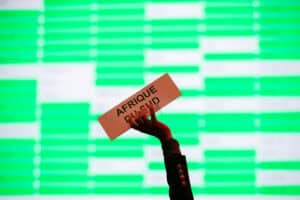This article references an older product of Assembly Voting, Assembly Voting X, which has now been replaced by our all-in-one voting solution Electa. To read more about Electa and what it has to offer, click here.
For the third time, the Church of Denmark has successfully used the Assembly Voting X solution to facilitate the election of a new regional bishop.
Around the world, more and more churches are turning to digital technology to modernize the way they engage with key stakeholders. This is particularly true in Denmark where the Church, has been proactive for decades in using digitalization to improve internal communications, workflows, everyday operations and the way it interacts with users of its services.
One of the Church’s successful projects has been the digital transformation of its democratic elections that are an integral part of the Church of Denmark community. 1664 local councils across the country regularly ask members to take part in the election of representative members and regional bishops.
In mainland Denmark there are 10 bishops, each overseeing a specific district of jurisdiction. Becoming a bishop means taking on a position of authority in these areas and Assembly Voting has helped conduct three large bishop elections using the Assembly Voting X (AVX) solution, most recently in Aalborg located in the Northern part of Denmark.
The decision to move to digital elections was originally driven by a need to overcome a number of administrative challenges and process irregularities that had been encountered using conventional paper-based postal voting as well as cost considerations. However, the decision later proved to bring a range of other benefits, explains Torben Stærgaard, who heads up the unit responsible for delivering it services to the Church of Denmark .
“Increasingly expensive and unreliable postal services triggered us to investigate digital voting more than a decade ago, but since then it has proven hugely successful not only in solving this issue, but in lots of other areas as well,” says Torben Stærgaard.
“Manually counting and recounting paper votes simply increases the likelihood of human error and is time consuming and costly. Our experience running bishop elections with AVX is that it takes a small team less than two hours to configure and start an election and we can deliver a final voting result immediately after we conclude the voting process,” he explained.
Furthermore, the voting process has been significantly simplified and made far more transparent and secure delivering a voting result that can be trusted with the integrity verified if anyone questions the result. Another significant benefit is the integration that is in place between the AVX system and NemID, the Danish national identity system.
“This makes it very easy for us to make sure that only people who are eligible to vote are able to cast their vote. If someone moves to another part of the country for example, then this is automatically registered and they lose their right to vote,” he continues.
In the most recent bishop election in Aalborg three different bishop candidates competed for the votes of 1765 church council members and priests. Using either their computer, tablet or smartphone, voters logged into the system with their NemID credentials gaining access to the digital ballot.
AVX ensures that voters remain fully anonymous throughout the entire election process by separating casted votes from any personally identifiable information. Following two separate election rounds, the recent bishop elections were concluded on 27 October with a record high turn-out of 90,8%.
“Security, simplicity, cost-efficiency and a voting result that can be quickly verified and proven correct. In a nutshell these are the main benefits we have achieved using Assembly Voting’s AVX solution.”
“We view Assembly Voting as a constructive and trustworthy partner that is always committed to fullfil the agreements we make. We also like the openness and high level of security that it provides in its core solution offering.”


